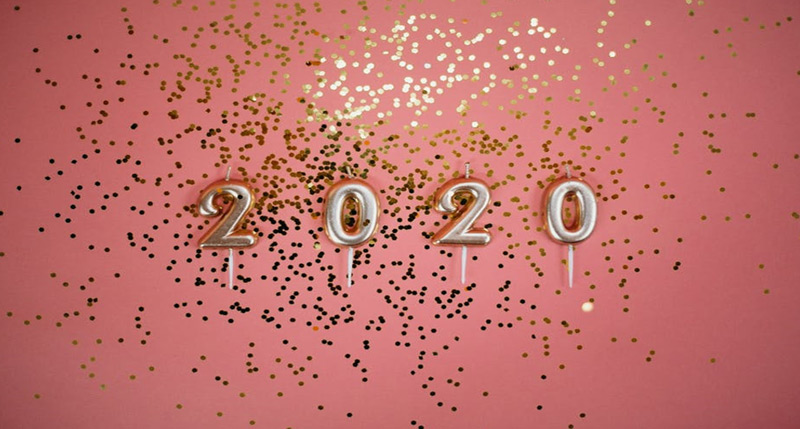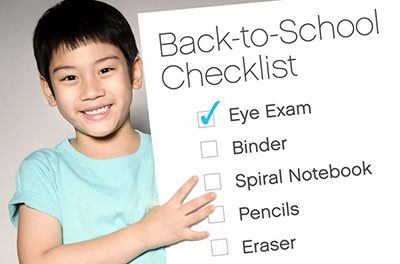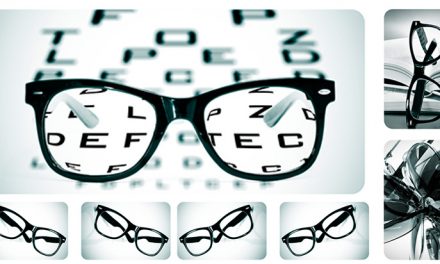It sounds so futuristic; it’s a new decade and a year we’ve been eagerly anticipating here in your optometrist’s office. Why? Because we want to help all of our patients to enjoy 20/20 vision both in the year 2020 and for many years into the future.
Which brings up an interesting question: What exactly do we mean when we say someone has 20/20 vision?
The term 20/20 vision represents a benchmark in visual acuity that means a person has excellent vision. Having 20/20 vision is the gold standard of visual acuity or “clarity,” and it’s the level of quality in vision we aim to achieve with each patient by providing the highest possible level of comprehensive eye care and vision correction.
Let’s examine some of the aspects around how we measure your vision when you come in for your annual exam.
What is visual acuity?
Visual acuity is the term used to express how sharp your vision is. Optometrists can calculate a measure of your individual visual acuity by testing one eye at a time from a specific viewing distance using a Snellen eye chart.
The Snellen eye chart ― the one with the large “E” at the top ― is named for Dutch eye doctor Herbert Snellen. He created it more than 150 years ago in 1862 to measure how well his patients could see. Some optometrists use one of the newer eye charts, including the LogMAR, Bailey-Lovie or ETDRs chart – all of which provide a similar way to measure visual acuity.
The Snellen chart features eleven lines of block letters that people familiar with the alphabet should easily be able to recognize — that is, if they have the visual acuity to do so as the letters get progressively smaller as you move down the lines of the chart.
The “optotype” used for the block letters on the Snellen chart is specially developed so that each letter has uniformly thick lines with uniform white space gaps between each letter, each line, and the gap in the letter “C.”
This level of precision helps to obtain a consistent measurement of each person’s ability to identify the progressively smaller and smaller letters on the chart’s descending lines from a predetermined distance of 20 feet.
What does 20/20 mean?
As the patient reads the eye chart with each individual eye, your optometrist records how many letters you correctly identify on each line of the chart. If you can read all of the lines on a standard Snellen chart ― which tests visual acuity down to 20/10 (or 20/5) accuracy ― you have outstanding visual acuity indeed!
However, most people can’t read down to the 20/10 level. So-called “normal” vision is measured by whether or not you can read the 20/20 line. If you can, it means that you can accurately read the same line of block letters from a distance of 20 feet that other people with “normal” vision can read at 20 feet.
What does 20/30 or 20/40 vision mean?
However, if you can’t read the 20/20 line accurately, maybe you can read the 20/30 line accurately. If so, this means that you must be as close as 20 feet to read what people with normal vision can read from 30 feet away.
It goes on like this. If you have 20/40 vision, it means people with normal vision can read from a distance of 40 feet what you can read from 20 feet. The measurement of 20/20 vision therefore represents the distance from which you can read text (20 feet) and what level of visual acuity that represents compared with the benchmark of people with normal vision.
The level known as legally blind means your “best corrected visual acuity is 20/200,” meaning a person with 20/200 vision can read at 20 feet away what a person with normal vision can see from 200 feet away.
What does 20/10 vision mean?
These visual measurements can go the other way, too: People with 20/10 vision can read from a distance of 20 feet what people with normal vision can read from 10 feet. In other words, 20/10 vision is twice as good as 20/20 vision.
Similarly, you can think of people with 20/40 vision as having only half the visual clarity of a person with 20/20 vision. This level of visual acuity means that a person must be standing at half the normal distance (20 feet) to see what a person with normal vision can see from 40 feet away.
Correcting your visual acuity
Good news: Most people who don’t have 20/20 vision can benefit from visual correction in the form of prescription glasses or contact lenses to improve their vision significantly and get fairly close — if not better than—20/20 vision.
If you’re starting the year 2020 out with less than optimal 20/20 vision, call us today to make an appointment. We’ll help you see more clearly this year—and every year.
And while you’re here in the office, we encourage you to take and post your eye exam picture on social media and tag it #2020eyeexam.





